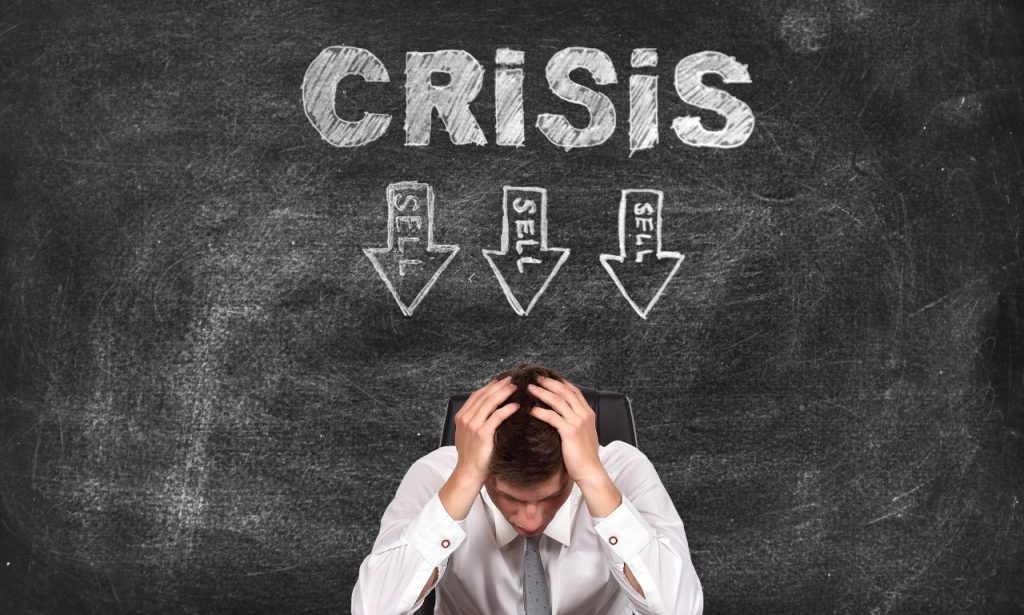Living in constant crisis mode is like driving with your foot permanently on the gas pedal. You’re moving fast, but your engine is overheating. I’ve seen countless clients and business owners trapped in this cycle. Their bodies and minds are constantly flooded with stress chemicals. This article isn’t rocket science—it’s about practical steps to shift from reactive chaos to proactive calm. We’ll explore how to build support networks, identify personal stressors, practice mindfulness, find neutral advocates, respect your limits, replenish yourself, connect with like-minded people, and create sustainable strategies for moving forward. Breaking free from crisis mode isn’t an overnight fix, but you can change your relationship with stress with consistent effort.
Build a Support Network
Your brain on crisis is like a computer with 50 tabs open, all running different programs. You need people who can help you close some of those tabs.
Start small. Identify 2-3 people you trust completely. These aren’t just casual acquaintances. I’m talking about people who won’t judge you when you admit to drowning. Maybe it’s a family member who’s seen you at your worst. It may be a colleague who understands your work pressures. Or it could be a friend who listens without immediately jumping to solutions.
The secret sauce isn’t just finding these people—it’s learning how to ask for help. Don’t say “I’m fine” when you’re not. Try something specific like, “I’m dealing with back-to-back crises and could use someone to bounce ideas off of for 30 minutes.” You’d be surprised how many people are willing to help when you make a concrete request.
Make a List of your Personal Stressors

Grab a notebook or open a note on your phone. For the next week, document every moment that your stress levels soar. Be specific. Don’t just write “work stress.” Note exactly what happened: “Client changed project requirements last minute,” or “Computer crashed before saving presentation.”
After a week, patterns will emerge. You might discover that your stress spikes during certain times of day, with particular people, or around specific tasks. This isn’t just an academic exercise—it’s actionable intelligence about your stress landscape.
A marketing director I worked with discovered that 80% of her crisis feelings stemmed from unscheduled calls and meetings that derailed her planned work. This insight led her to block “do not disturb” time on her calendar and set clearer boundaries around communication expectations. Her daily life transformed not because the demands decreased, but because she understood and managed her specific stressors.
Practice Mindfulness
What happens during that minute is fascinating. Your body starts to counterbalance stress chemicals like adrenaline and cortisol. Your racing thoughts slow down. Your perspective widens slightly. It’s like stepping back from a painting you’ve been examining too closely.
Consistency matters more than duration. Five one-minute mindfulness breaks throughout your day will do more for your crisis management than one five-minute session. Put reminders on your phone or computer if needed.
One tech executive I coached built what he called “transition mindfulness” into his schedule. Before switching between meetings, he’d take 30 seconds to breathe and reset. His team noticed the difference in his presence and decision-making. His emotional baseline stabilized. The crises didn’t disappear, but his relationship to them changed fundamentally.
Find a Neutral Advocate
When you’re stuck in constant crisis mode, your perspective narrows. You need someone who can see the bigger picture without the emotional charge you’re experiencing. That’s your neutral advocate.
This person differs from your support network. They aren’t necessarily there for emotional support. Their job is to help you see situations objectively. This could be a coach, a mentor, or a professionally distant colleague.
The key quality is their ability to ask questions that broaden your thinking: “What’s the deadline here?” “What’s the worst that could happen?” “What opportunities might this crisis create?”
These questions aren’t meant to minimize your stress. They’re designed to engage your prefrontal cortex—the rational part of your brain that crisis mode tends to bypass.
A hospital administrator I worked with found her to be a neutral advocate for a retired healthcare executive. During weekly calls, this advocate would help her distinguish between genuine emergencies and routine challenges that felt like emergencies due to her crisis mindset. Within three months, her staff reported a dramatic change in workplace atmosphere. Problems were still addressed promptly, but without the constant feeling of impending doom.
Know your Limits
Crisis mode tricks you into believing you can and should handle everything. You can’t. Nobody can. Accepting your limits isn’t weakness—it’s strategic wisdom.
Start by examining your current commitments. For each one, ask: “Is this essential?” “Am I the only person who can do this?” “What would happen if I delegated or postponed this?” Be ruthlessly honest with yourself.
Next, practice saying that small but mighty word: “No.” Not “Maybe,” “I’ll try,” or “Let me see what I can do.” Just “No.” It feels uncomfortable at first, but that discomfort is the sensation of setting healthy boundaries.
Remember this formula: Every time you say yes to something, you’re saying no to something else. Often, that “something else” is your wellbeing, so focus on true priorities or time with people who matter to you.
One founder I coached realized he was saying yes to every client request, regardless of scope or timeline. We created a decision tree to help him evaluate requests objectively. When he started saying no to projects that didn’t meet his criteria, something unexpected happened: His business became more profitable, and his reputation for quality work improved.
Replenish Yourself
In constant crisis mode, you deplete your physical, mental, and emotional resources without adequate replenishment. This isn’t sustainable.
Replenishment isn’t selfish—it’s necessary maintenance. Think of it like charging your phone. You wouldn’t expect your phone to run indefinitely without charging. Why expect that from yourself?
The most effective replenishment activities engage different parts of your brain than your work does. If your job involves analytical thinking, try something creative like drawing or music. If your work is people-intensive, consider solo activities like hiking or reading.
Schedule replenishment activities with the same seriousness as work appointments. Put them on your calendar with specific times. Treat them as non-negotiable.
A finance executive I worked with built what she called “intentional times” into her schedule—30-minute blocks for activities that replenished her energy. Sometimes it was playing piano. Other times, it was taking a walk without her phone. The consistency of these breaks, not their duration, helped her brain step out of crisis mode and reset.
Look for Like-minded Folks
Finding people who understand your specific challenges creates a powerful sense of perspective. This could be through professional associations, online communities, or informal meetups with people in similar roles.
These connections serve multiple purposes. They provide emotional validation—others understand what you’re going through. They offer practical solutions—others may have solved problems you’re facing. They create context—you can gauge whether your challenges are unique or common in your field.
A startup founder I advised joined a weekly mastermind group with other founders. The simple act of hearing others discuss similar challenges normalized his experience. The group became a place to exchange practical strategies for breaking the crisis cycle. His perspective shifted from “I’m failing because I’m constantly putting out fires” to “Managing these challenges effectively is part of the job.”
How to Stop Being in Crisis All the Time?
Breaking the crisis cycle requires a systems approach, not just willpower. You need to change your environment, habits, and thought patterns simultaneously.
Start by auditing how you use your time. Track a typical week in 30-minute increments. Identify patterns: When do crises typically occur? Are there preventable situations you consistently react to instead of anticipating?
Next, build buffer time into your schedule. If a task will take an hour, allocate 90 minutes. This simple change reduces the time pressure that feeds crisis mode.
Create decision filters for incoming requests. Not everything requires immediate attention. Try categorizing issues as: “Must address now,” “Must address today,” “Must address this week,” and “Can delegate or decline.” This prevents every situation from feeling equally urgent.
Examine your relationship with technology. Constant notifications keep your brain in high alert mode. Consider designating times to check emails and messages rather than responding to each ping immediately.
How to Move Forward when Crisis is Constant?

You may work in an industry with genuine emergency situations, have serious health issues, or have family challenges. In these cases, the goal isn’t eliminating crises but developing sustainable response strategies.
First, distinguish between crises you can influence and those you cannot. For those you cannot control, focus on managing your response rather than changing the situation.
Create practical routines that ground you during tough times. These might include a morning ritual that centers you before the day begins or an evening practice that helps you process and release the day’s stress.
Develop explicit recovery protocols for after intense periods. Just as athletes have cool-down routines after intense training, you need deliberate recovery practices after high-stress episodes.
Consider working with a therapist who specializes in stress management. They can help you identify unconscious patterns that keep you locked in crisis mode and develop personalized strategies for breaking those patterns.
Conclusion
Getting out of constant crisis mode doesn’t happen overnight. It requires consistent effort across multiple fronts: building support systems, understanding your specific stressors, practicing mindfulness, finding objective perspectives, respecting your limits, replenishing your energy, connecting with others who understand, and developing sustainable systems.
The shift happens gradually. You’ll notice small changes first—perhaps you sleep better or respond rather than react to challenges. Over time, these small changes compound into a fundamentally different relationship with stress and pressure.
ALSO READ: How to Keep Your Business Afloat in Economic Tough Times
FAQs
Yes. Chronic stress triggers ongoing release of cortisol and adrenaline, which can lead to serious health issues, including cardiovascular problems, immune suppression, and cognitive impairment.
Most people begin noticing improvements within 2-4 weeks of consistent practice, but breaking deeply ingrained patterns typically takes 3-6 months of sustained effort.
While medications may help manage symptoms of anxiety or stress, they work best as part of a comprehensive approach that includes behavioral changes and possibly therapy.
Focus on creating clear boundaries between work crises and the rest of your life, and develop specific decompression routines for transitions between the two.
Consider seeking professional help if your crisis feelings interfere with sleep, relationships, or daily functioning, or if you experience physical symptoms like chest pain or panic attacks.




